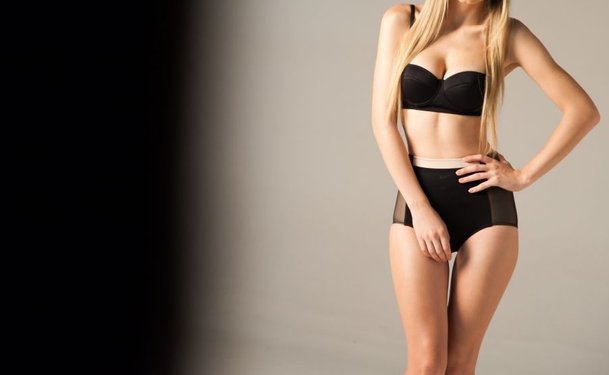Updated August 2018
When you have so many questions about breast augmentation recovery, it can be easy to forget some. Here are seven common questions women have in the early weeks of the breast augmentation recovery process.
1. What can I do to prevent stretch marks after breast augmentation?
First, it's hard to prevent stretch marks after breast augmentation. The procedure stretches the breast skin, collagen and elastin fibers to accommodate the implants. The tears that occur can form the scars you refer to as stretch marks. That said, not all women will develop them after breast augmentation. Though genetics play a role, you are at increased risk of getting stretch marks if you selected breast implants too large for your tissue thickness, skin elasticity and breast width diameter (BWD).
You can take steps to prevent them or reduce their appearance by applying moisturizers (e.g. castor oil, cocoa butter, shea butter, vitamin E oil, olive oil, aloe vera, retinol creams, etc.) daily, staying well-hydrated, eating a nutrient-rich diet and soaking up some sun to get a healthy dose of vitamin D. When all else fails, there's laser treatment.
2. What do I do about itching after surgery?
Itchiness is common after breast augmentation and is part of the recovery process. The implants have stretched your skin, your nerves are regenerating, and your incisions are trying to heal. Itchy skin and incisions is usually a good sign that the wound is healing properly.
Try using a warm or cold compress on or around the itchy area. You can also scratch as long as you are working around the incision. Once the incisions have healed, you can use anti-itch creams or moisturizers.
3. What are the rules when it comes to massaging breast implants?
Not every woman is instructed by their plastic surgeon to massage after breast augmentation. If your surgeon told you not to, then don't. Your doctor may not believe its necessary or beneficial in your case. Such is true when it comes to patients with textured breast implants. Textured implants need to adhere to the tissue. Massaging will displace the implants, thus interfering with this process.
If you have smooth implants and were told to massage, your surgeon should have given you instructions--on paper and in-person--to help maneuver the implants into place and settle them. If you've forgotten or are uncomfortable doing them, go back for additional instructions. In the meantime, this is what breast implant massage looks like:
4. When and how should I shower after breast augmentation surgery?
You will be instructed to wait 24-72 hours before showering after breast augmentation surgery. When the time comes, you will want only to let the water run over the dressings. The water should be lukewarm or cold as hot water can cause inflammation. Your surgeon may allow you to wash your breasts with antibacterial soap, but you will want to take care to avoid getting soap directly in the wound.
To help, do not rub the incision site, instead create soapy suds on top of your breasts and let the suds drip down to underneath the breasts. Then, with your fingers, gently run the suds across your breasts. Let the water from the shower hit the top of your breasts and run down naturally over the wounds. Ensure the dressings remain intact and gently pat them dry afterward.
5. What about swimming after breast augmentation. When can I do this?
Patients are asked to refrain from being submerged in any water for 3-4 weeks, or until their wounds are dry and closed. Bodies of water--including baths--contain microbes that pose a risk of infection and can lead to other complications like necrosis. After the one-month period, provided your surgeon has cleared you, you can submerge yourself in a pool. However, you may be asked to wait a few more weeks before swimming laps to avoid overexerting the chest muscles and straining your incisions.
6. I have breast augmentation scars. How do I treat them?
No matter if your incisions were made around your areola, under your breasts, in your armpit or along your navel, you would have breast augmentation scars. Silicone gel is just one way to reduce their appearance. In one study, the gel decreased scar texture by 86 percent, improve color by 84 percent and reduce the height of the scar by 68 percent. Studies have shown similar results with silicone sheeting and other scar treatments. Talk to your plastic surgeon to see what he recommends.
7. When can I exercise after breast augmentation, and how do I support my breast implants?
The time in which you can return to your regular workout will depend on a few factors, including the placement of your breast implants. Women with implants placed over the muscle are often back to exercising before women with implants under the muscle since submuscular placement is more invasive and requires more healing time. In general, it may take up to two months before you can perform high-intensity exercises like CrossFit and long-distance running.
When you do return to your exercise routine, you will need a post-breast augmentation sports bra to support your new breast implants effectively. Since not all brands create all sports bras equally well, you will need to choose one with the appropriate support, closures, straps, bandwidth, size, cups, impact levels, and fabric.
Have more breast augmentation recovery questions?
You should always seek the advice of your plastic surgeon. But when questions arise, and you want more immediate feedback, you can turn to breast augmentation forums. They are a great way to pose questions and get answers from real women who've been through the process. They can lead you through breast augmentation recovery, giving you helpful tips along the way.



